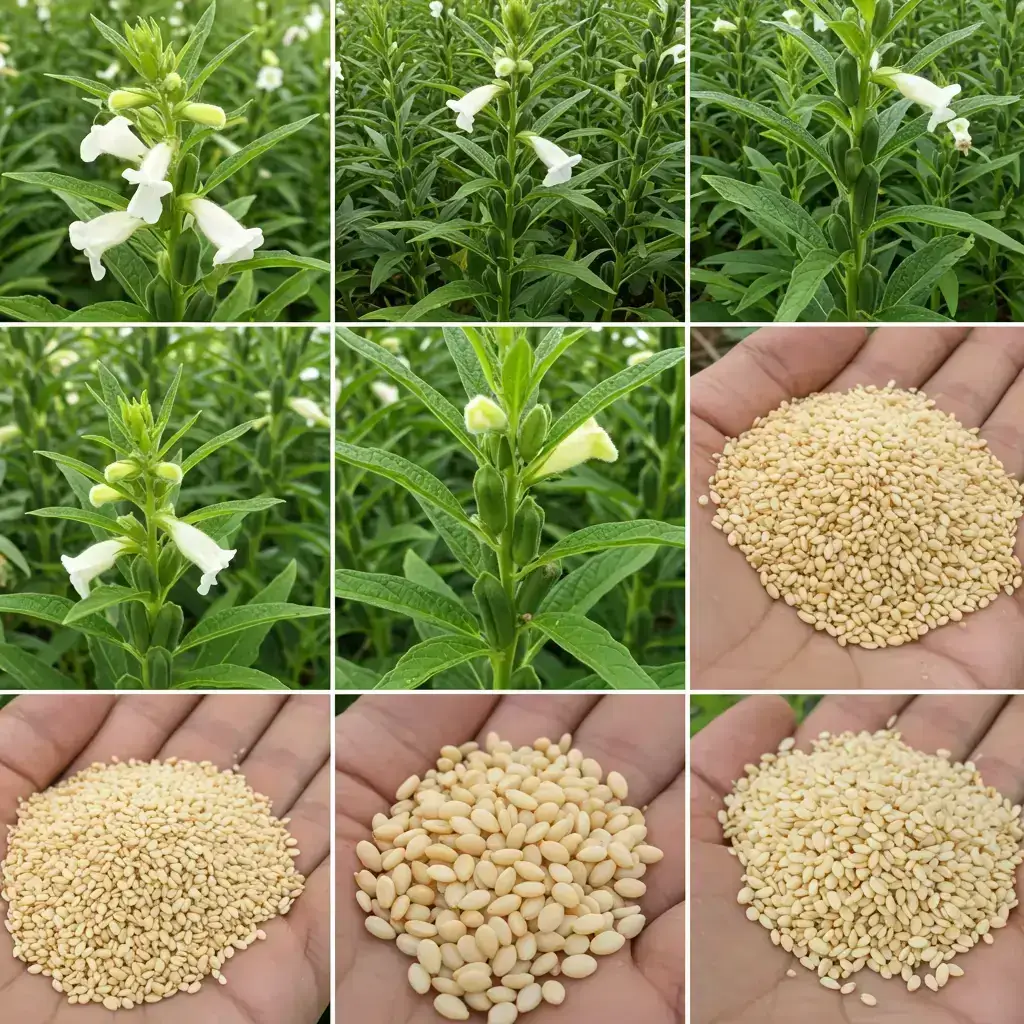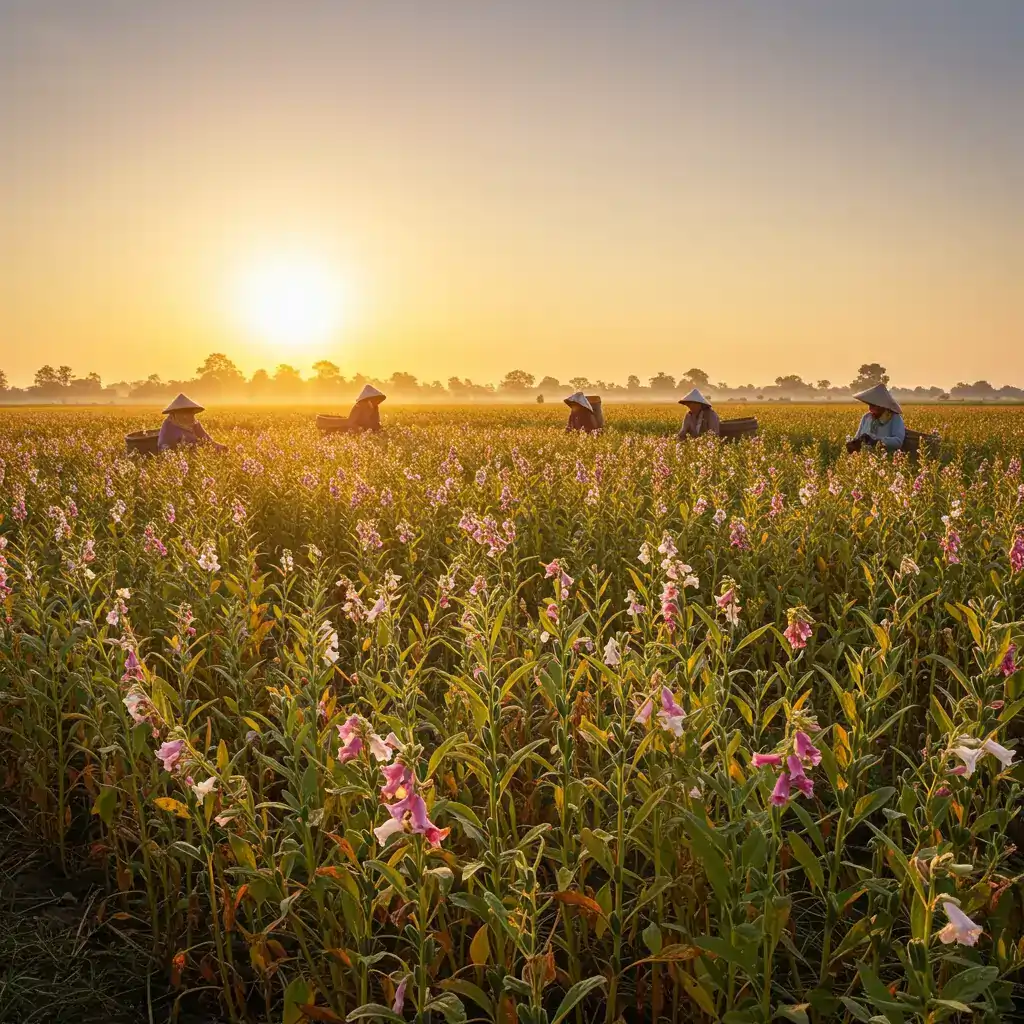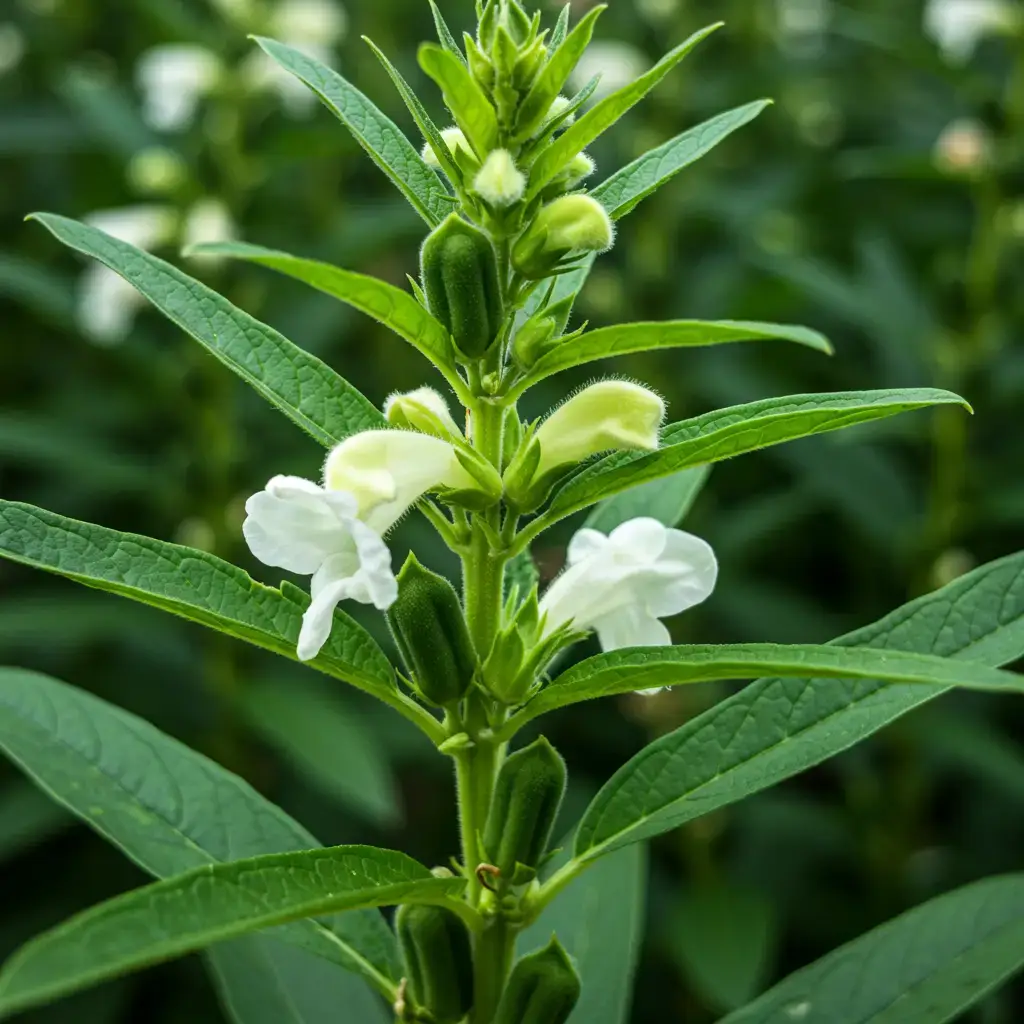The sesame seed plant is more than a tasty snack addition. Its seeds are used worldwide in cooking, oils, and natural remedies. It’s a valuable crop for gardens and kitchens. Knowing how to grow and use it unlocks its full potential.
Learning to grow the sesame seed plant at home is exciting. It lets you explore its many uses. Whether for cooking or traditional remedies, this guide covers the basics. Find out how its seeds are used in salad dressings and beauty products, thanks to centuries of cultural use.
Understanding the Sesame Seed Plant
Discover where sesame seeds come from by learning about the plant they grow on. The question what kind of plant do sesame seeds come from takes us to Sesamum indicum. This ancient crop has traveled the world for thousands of years, linked to human history.
History and Origin
Sesame has been grown since 3000 BCE, starting in Mesopotamia and ancient Egypt. Archaeologists have found evidence of its use in rituals and trade. A
clay tablet from Babylon mentions sesame oil as a luxury item
, showing its early importance. It then spread to Asia, Africa, and the Americas, adjusting to different climates.
Botanical Characteristics
The sesame plant is an annual herb, reaching 3–5 feet tall. It has:
- Leaves: Oval-shaped, arranged alternately along the stem.
- Flowers: Delicate tubular blooms in white, pink, or purple, attracting pollinators.
- Seed Pods: The fruit—a capsule that bursts open when ripe, releasing seeds. Each pod holds dozens of seeds, protected by a hard shell.
Its ability to adapt makes it thrive in warm climates. Knowing what kind of plant sesame seeds come from shows its long survival. Its resilience and seed dispersal method help it survive in different environments.
Ideal Growing Conditions and Zones

Choosing the right sesame plant growing zone is crucial for a good harvest. Sesame loves warm, frost-free places. In the U.S., it grows well in USDA hardiness zones 5–11, like Texas, California, and the Southeast.
These areas have the right mix of heat and moisture for sesame. Soil should be loose and drain well. Sandy loam with a pH of 6.0–7.5 is best. Heavy clay can cause root rot.
Full sun is a must—plants need 6+ hours of sun to bloom well. The best temperature is between 70–85°F (21–29°C) during the day.
- Zone Adaptation: In cooler zones, start seeds indoors to extend the growing season.
- Microclimate Tips: Use row covers in early/late seasons to protect from frost.
- Watering: Keep soil moist but never waterlogged. Reduce irrigation once plants mature.
Check your local frost dates to plant at the right time. In northern zones, raised beds help with drainage. The sesame plant growing zone also affects pest risks. Warmer areas may have more insects, so watch out.
Sesame Seed Plant Care and Maintenance
Proper sesame seed plant care is key for strong growth and lots of seeds. Keep an eye on watering, soil health, and pests. This care helps plants grow well from start to finish.
Watering and Soil Requirements
Water sesame plants deeply but not too often to avoid root rot. Aim for 1-2 inches of water each week, adjusting for rain. Use soil that drains well, like sandy loam, with a pH of 6.0 to 7.0. Mulching keeps the soil moist in hot weather.
- Water at soil base to prevent leaf disease
- Test soil annually for nutrient imbalances
- Avoid overhead watering to reduce fungal risks
Fertilization and Pest Control
As plants grow, their nutrient needs change. Use a balanced 10-10-10 NPK fertilizer when they flower. For organic options, try compost or fish emulsion. Watch for aphids and leaf spot to avoid losing yield.
“Inspect plants weekly for pests; early detection is critical for control,” advises the USDA Plant Health Institute.
Use neem oil sprays or insecticidal soap to control pests. Rotate crops every year to stop pests. Planting marigolds with sesame can keep some pests away. Regular weeding helps plants get the nutrients they need.
Harvesting and Uses of Sesame Seeds

Learning how are sesame seeds harvested helps you get the most out of their taste and health benefits. The journey begins when the seed pods turn brown and start to open. It’s important to pick them at the right time to avoid losing seeds.
- Monitor maturity: Check stalks every week. Pods should rattle when shaken, showing they are dry.
- Harvest method: Small growers pick pods by hand. Big farms use machines to gather whole plants.
- Post-harvest processing: Lay stalks on screens to dry more. Then, crush dried pods to get seeds. Finally, winnow to get rid of chaff.
After harvesting, sesame seeds offer many benefits. They’re great for baking, like in bagels or bread. They also make a tasty topping for salads and snacks. Their oil is excellent for cooking because it has a high smoke point.
But sesame seeds do more than just taste good. They’re used in cosmetics for their moisturizing effects. They’re also used in traditional medicine for their possible anti-inflammatory properties.
Keeping them fresh is important. Store them in airtight containers in a cool, dark spot for up to six months. Roasting them before using can make them taste even better. The way how are sesame seeds harvested is crucial: it helps prevent mold and keeps nutrients like calcium and iron.
“Quality starts in the field. Proper harvesting techniques ensure every seed reaches its full potential.”
Tips for Growing Sesame Seeds at Home
Growing sesame seeds at home is rewarding but needs careful attention. Here are practical steps for gardeners of all levels.
Preparing Your Garden
Find a sunny spot with soil that drains well. Sesame loves loose, fertile soil. Check your soil’s pH to make sure it’s between 6.0 and 7.0.
Use a garden fork to loosen the soil 12 inches deep. Remove weeds and rocks. Lightly mulch to keep moisture in but don’t compact the soil too much.
Planting Techniques
- Seed Placement: Plant seeds ½ inch deep, 4-6 inches apart in rows 18–24 inches wide.
- Watering: Water gently after planting. Avoid flooding. Keep the soil moist until seedlings appear in 10–15 days.
- Support: Stake tall plants (over 3 feet) to prevent wind damage. Use bamboo stakes tied loosely to stems.
Common Challenges
- Pests: Birds and aphids target young plants. Cover seedlings with netting and check weekly for pests.
- Overwatering: Don’t let the soil get too wet—it can cause root rot. Water only when the topsoil feels dry.
- Harvest Timing: Wait until seed pods crack open. Harvesting too late can result in lost seeds.
With patience and these tips, you’ll have a great harvest. Focus on soil prep, precise planting, and proactive care to beat common problems. Happy gardening!
Conclusion
Growing sesame seeds needs careful attention to soil, sunlight, and timing. Use proper spacing and manage pests to keep plants healthy. Harvesting at the right time ensures the best taste and quality.
Home gardening makes caring for sesame seeds easy. Use organic fertilizers and watch the moisture levels. This mix of old and new methods leads to a great harvest.
Explore sesame’s many uses in your garden. Use them in salads, oils, or snacks for fresh, sustainable ingredients. Begin small, adjust as needed, and enjoy the fruits of your labor.
FAQ
What kind of plant do sesame seeds come from?
Sesame seeds come from the sesame seed plant, known scientifically as Sesamum indicum. This plant blooms and produces capsules with the seeds we use in cooking.
How are sesame seeds harvested?
Harvesting sesame seeds is done by hand or with special machines. The plants are cut when the capsules start to turn brown. Then, the seeds are carefully taken out to avoid losing any.
What are the uses of the sesame seed plant?
The sesame seed plant is very useful. Its seeds are used in many dishes, sauces, and baked goods. The oil from the seeds is great for cooking and making cosmetics. Plus, the leaves can be eaten as a vegetable.
What is the sesame plant growing zone?
Sesame plants love warm weather and grow best in USDA zones 9 through 11. They need a long, warm season to grow well and produce a good crop.
What are the care requirements for growing a sesame seed plant?
To take care of a sesame seed plant, make sure it gets lots of sunlight and has well-drained soil. It also needs regular water, especially when it’s dry. Keep an eye out for pests and diseases too.
How do I grow sesame seeds at home?
To grow sesame seeds at home, start by making your garden bed ready with good soil. Plant the seeds after the last frost when it’s warm. Make sure they get enough sunlight and water.
What challenges might I face when growing sesame seeds?
You might face problems like aphids and root rot. Sesame plants also don’t like cold or wet weather. So, choose the right place and take good care of them.

